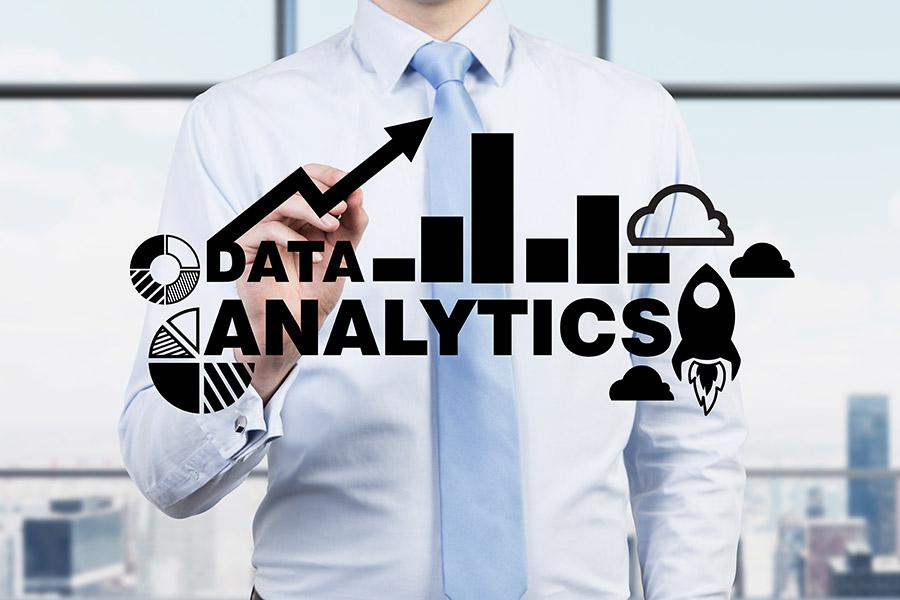Planning a Data Analytics splash? It's time to take note of these 5 trends
The good news is that every day more and more organisations are embracing data analytics —many in a strategic way. The bad news, however, is that many don’t have any guiding framework to help systematically identify new business opportunities, drive alignment across technology implementations, and deal with the new innovations entering the market, including the rapidly changing business/technology landscape.
Each enterprise has its own unique opportunities and challenges that could drive strategic value/outcome (a fact that has kept most players from defining the framework). What I find with most organisations is that they just jump into this without a strategic framework that, on one hand leads to point solutions and use-cases implementation, and on the other results in technology projects that don’t deliver business value.
Data analytics is a journey, and point solutions/use-cases grossly underserve the organizations’ potential and strategic advantage they can build with data analytics. There is a need for systematically discovering and sustaining the business outcomes. For e.g., a framework that brings it all together with business theatres across revenues (top-line), ops efficiencies (bottom-line) and new revenue models (new-line), and builds on a technology blueprint that is aligned with identified business opportunities in the above-mentioned theatres.
The framework should go beyond trials, POCs and obvious low hanging fruits and making this an industry-grade engine to continuously identify new sources of value and create sustained monetization. However, in order to scale to such frameworks, organizations need to go across to newer areas that help drive compounding value—AI, automation, machine learning, digitalization (including IOT) to just name a few. For example, one of the manufacturing companies focused on the problem of how to predictively identify equipment parts, which frequently failed the extended or post warranty period, for better forecasting and inputs to R&D wing. The challenge lay in quantifying the risk of asset extended warranty policies, identifying the key parameters aimed to make parts forecasting more accurate, and developing a process to read and store historical, post-warranty and parts counter activity from the business systems.
The solution involved looking at the existing product, warranty, telematics, customer, and maintenance data for parts analysis across service repair orders, by deploying AI (reading maintenance logs, images, etc.), automation, asset data through IOT, and analytics. This created a better understanding of part stock forecasting, helped balance the inventory level, and drove cost-savings based on optimized inventory and better sales forecasting.
Building on a data analytics blueprint that does not address these newer areas would essentially lead to organizations missing out on these bigger possibilities and opportunities. It is important to take note of these areas while building your next-gen data analytics business and technology blueprint. Using the framework would give you this very advantage due to its rich library of force-multiplier platforms, proven industry/business solutions, etc.
1. Internet of Things (IoT)
Advanced analytics and data processing techniques, which is enabling results from high volumes of data collected from the machine-to-machine communication devices, is fueling the growth of the Internet of Things market—accelerating growth from $170.57 billion in 2017 to $561.04 billion by 2022.
2. Artificial Intelligence
Artificial Intelligence (AI) is now a major driver of the economy, with significant changes being brought about by vision, voice, text and deep learning, all of which is being driven by data-intensive machine learning. AI, which enables computer systems to not just discover and identify patterns and/or objects, but equips the system to function in the areas of ‘understanding and knowing’, is creating applications for varied business requirements— making data analytics vital to the AI evolution.
3. Machine Intelligence
Machine intelligence, which forms the backbone of predictive analytics, uses existing data to create machine learning (ML) models, enabling projections. Big data, unlike previously used representative data samples, has enabled the access to large volumes of data with agility, driving innovation in AI and machine learning applications.
4. Augmented Reality
Augmented Reality (AR), through the techniques of motion recognition, dynamic projection and the filtering of visualization approaches, creates valuable insight generation by uncovering the different slices of data, which otherwise may not be visualized. This provides opportunities for visualization of Big Data, such as expanding to another branch of information from a specific point of the presented data—making AR an important accessory for the influence and reach of Big Data.
5. Complete customization
Data and analytics is the key to creating complete customization that is being sought out across verticals. From retailers understanding how customers use their products and services, to organizations understanding how their operations and supply chains are performing, and gaining insights to managing their workforce and identifying key risks, data and analytics captured across the value chain drives strategies for sustainable and profitable growth.
-By Mr. Sunil Senan, Vice President, Data & Analytics Unit at Infosys
The thoughts and opinions shared here are of the author.
Check out our end of season subscription discounts with a Moneycontrol pro subscription absolutely free. Use code EOSO2021. Click here for details.
